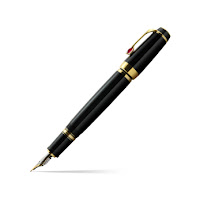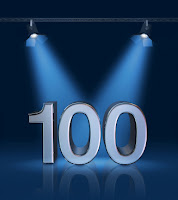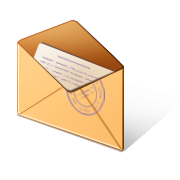Brilliant Email Etiquette Checklist
 |
| Good email etiquette |
How good is your email etiquette? Will it help you stop email overload and reach inbox zero or drive up the email traffic in your inbox? Recipients are far more likely to respond to emails which are easy to read and indicate clearly what is expected of them.
Use this checklist to score the clarity of your emails and establish how well they will be received by the recipient.
Scoring: 1= Poor 2= OK but could be improved 3= Brilliant, it fully meets the criteria.
1. Subject line. Does the subject-line reflect the content of the email and if action is required, by when?
2. Tone. Is it professional and business like without being cold and distant?
3. Grammar and spelling. Are there any spelling or grammatical errors?
4. Structure and layout. Have you stated the key facts at the start and separated each new topic/point?
5. Wording. Is it written in plain clear English and free of jargon and text-speak?
6. Font. Have you used a consistent business-like font and colour?
7. Call to action. Does the email explain clearly what the recipient needs to do next?
Interpreting your score
7 = Poor. Don’t be surprised if there is either no response from the recipient or they fail to notice your email. Go and read Part 3 of Brilliant Email.
8 to 14 = OK. However there is room for improvement – go back and read Part 3 of Brilliant Email.
15 to 21 = Good. You are on your way to writing brilliant emails which should be read (and, as appropriate, dealt with) promptly.
For more help with your email etiquette either read Brilliant Email by Monica Seeley.
Alternatively, come to one of our Brilliant Email Master Classes. For more information see either www.mesmo.co.uk or www.brilliant-email.com or contact Susan Oakes by email: info@mesmo.co.uk and phone: +44 (0)1202 43 43 40
Tags: email communications, email etiquette, email etiquette training, email sign off, email subject line

We are publishing the 100th edition of the Mesmo Consultancy ‘e-briefing’ – tips and hints on how to save time by reducing email overload and using brilliant email etiquette. The first edition appeared on 1st January 2003 and was emailed to 350 subscribers. 100 editions on and we have over 2,300 subscribers.
How has email changed over the last ten years since the first edition?
SPAM dominated discussion on email. There were government conferences on it. Company boards were blamed as they did not recognise the need to take control and enforce proper Acceptable Usage Policies. In 2011 the resources needed to process the current volume of SPAM are sufficient to drive 1.6 million times around the world.
Phones4U made headlines as employees were banned from using email for internal communication and their MD said this would save them £1M per year. Here we go again in 2012 with Atos trying to find alternatives to email for internal communications.
Royal Mail found that poor business etiquette was costing companies £4bn in lost customers. Poor email etiquette is now just as costly judging from some of our clients’ woes.
The Audit Commissioners found that IT fraud and abuse was posing major problems to public sector organisations. New technologies, like the use of handheld devices (PDAs) and wireless networking, are creating fresh risks to which public services are only slowly reacting.
There was a rise in the sales of traditional writing instruments according to research analysts. One teacher was so fed up with text speak that she ordered her pupils to write only with a fountain pen.
Hands up all those who still use a fountain pen – especially to say ‘thank you’?
Email overload and time wasted on the Internet were starting to become an issue. A Government survey estimated that people wasted two days per year ‘wilfing’ – aimlessly surfing the net. Now we estimate business people waste up to nearly two days per month dealing with unnecessary email.
Email addiction is becoming a problem for Blackberry users. In 2011 the Blackberry outage served to highlight just how serious email addiction has now become. It is one of the biggest drains on employee’s health and causes of stress related illness.
Twitter takes off and we launched our daily email tips under the EmailDoctor pseudonym. Some were starting to suggest that the use of email would decline in the face of rising use of social networking. See Social Networking in Business 2009.
Email overload continues to dominate the news with some declaring email bankruptcy. Cyber crime costs more than physical crime. There are an estimated 2M emails sent per second worldwide. In personal terms it equates to about 72 email messages received per person per day which is about one new email every ten minutes! Now research analysts estimate a rise to 80+ by 2015.
There are now several websites dedicated to reviewing conventional note books and writing instruments!
Does history repeat itself? Yes, just like fashion, where drain pipe trousers are succeed by flairs and then straight cuts and then back around the loop. Mini skirts come and go and for some they were called ‘pelmets’. In suits it’s double breasted then single breasted are all the rage.
Indeed for some of us of a certain age ‘Cloud Computing’ feels just like ‘Bureau Services’. Ah but many of you are far too young to have heard that term.
So hold onto a few of these challenges and make a diary not about how you resolved them because you may well need to look back in anger five years down the line!
Tags: email addiction, email and the cloud, email best practice, email carbon footprint, email etiquette, email overload
How can brilliant email etiquette help you stop email overload? That was the theme of today’s Twitter Chat. My thanks to everyone who participated. Below is a transcript of the key tweets.
 |
| Email Etiquette |
| Monica Seeley @EmailDoctor |
| There is also our ‘Email Etiquette Checklist’ to help you send the right message right first time. emptyinbox |
| Monica Seeley @EmailDoctor |
| For more tips on email etiquette to stop email overload either come to one of our workshops or webinars #emptyinbox |
| Monica Seeley @EmailDoctor |
| @MarshaEgan what’s your top tip? #emptyinbox |
| in reply to @MarshaEgan |
| Monica Seeley @EmailDoctor |
| A1 – Think five is my motto – five short sentences, five questions. More and you loose the other person. #emptyinbox |
| Monica Seeley @EmailDoctor |
| A1 Keep the content clear, concise and structured so its easy for the recipient to read. #emptyinbox |
| Marsha Egan @MarshaEgan |
| Q1 What is your best email etiquette tip? #emptyinbox |
| Marsha Egan @MarshaEgan |
| Hi from the US! #emptyinbox |
| Monica Seeley @EmailDoctor |
| Does correct spelling and grammar save time – Yes. #emptyinbox |
| Monica Seeley @EmailDoctor |
| Consider the subject line as your elevator pitch #emptyinbox |
| Monica Seeley @EmailDoctor |
| Always re-read your message before hitting send ask yourself will the recipient understand me #emptyinbox |
| ExecutiveSecretary @lucybrazier |
| RT @EmailDoctor: What’s best way to open an email to stop email overload? Join me today for Twitter Chat #emptyinbox at 17.00 GMT to find… |
| Monica Seeley @EmailDoctor |
| Does anyone have a question/tip they would like to share? #emptyinbox |
| Monica Seeley @EmailDoctor |
| Using brilliant email etiquette is a quick way to save time and stop email overload by reducing the rounds of email ping-pong. #emptyinbox |
Tags: email etiquette, email overload, empty inbox, inbox zero
But what about the best of the worst. Here are two which made me laugh.
I’m off skiing until Monday January 23, and won’t be checking my emails unless (a) the eurozone finally wheezes its last or (b) all the pistes are all closed and I get really bored. If it’s urgent, though, try contacting ….
Joe (an alias) is up north delivering a workshop on pitching and won’t be checking emails regularly. If it is urgent please call on …. See you soon Joe.
I ask you what image do you now have of these two people?
Very personally I am not interested in what the person is doing, simply that they are not there should I need them. But maybe I am just an old fashioned girl!
When will people realise just how much information they give away through their Out-of-Office message and lax email etiquette?
Tags: email best practice, email etiquette, out-of-office messages
A sure fire way to fight email overload and reach inbox zero is through good email etiquette.
How many times have you read an email which says just ‘OK’ or ‘Thanks’? What does the sender really mean. Do they mean ‘thanks I have your response and will get back to you’. ‘Thanks – end of conversation.’
Conversely, there is the long complex messages which you skim read a couple of time, have no clear idea what is really being said and park them for a while in the hope they will go away or send you a clearer follow-up.
I’d bet we have all been guilty of sending emails which fall in to both categories at some point in our lives. I have.
One crucial aspect of good email etiquette is the way the content of the email is structured. Your goal must be to send the right message, right first time, no matter how short or long your message. Writing in clear concise language is the starting point. Even if the reply is short be precise about what you and saying. For example, ‘Thanks – we will discuss your proposal and get back to you next week’.
Here are my three top tips.
For those like me who stiil struggle to write good English an invaluable aid is Lynne Truss’s book ‘Eats Shoots and Leaves’.
Using good email etiquette reduces the rounds of unnecessary email ping-pong as it limits the scope for misunderstanding. In turn this helps you reduce the email overload and achieve an inbox zero that is an empty inbox.
For more tips and hints on how to improve your email etiquette follow me on Twitter as @emaildoctor. This week’s daily tips focus on email etiquette to reduce the gap for misunderstanding.
Tags: email etiquette, empty inbox, inbox zero